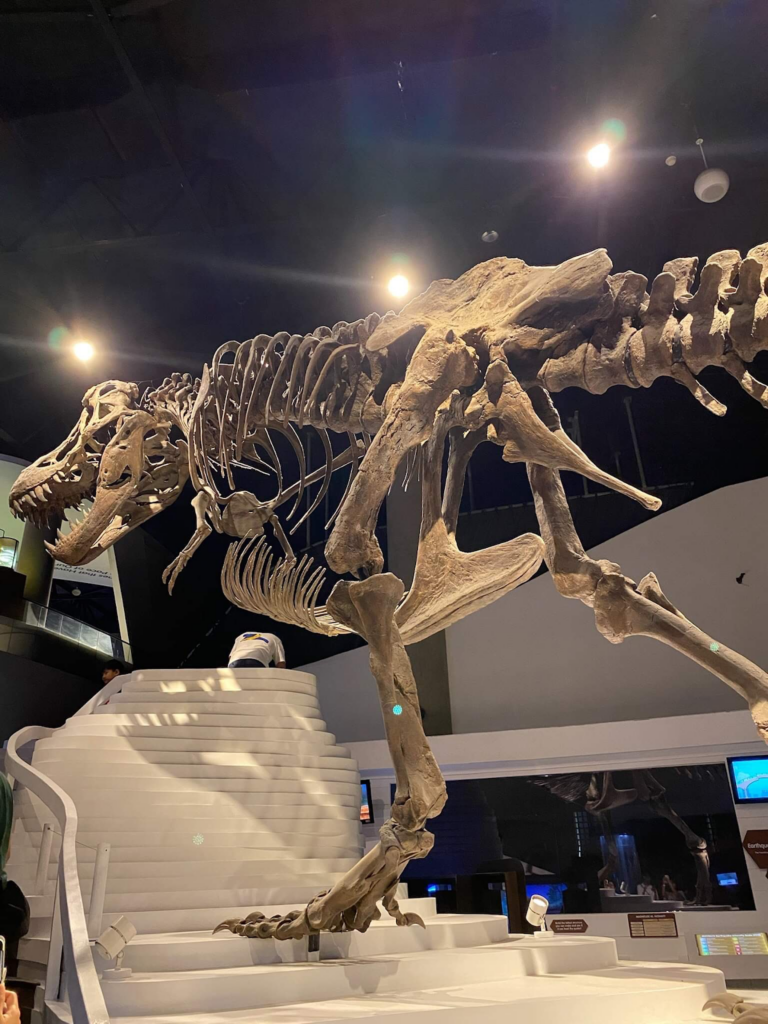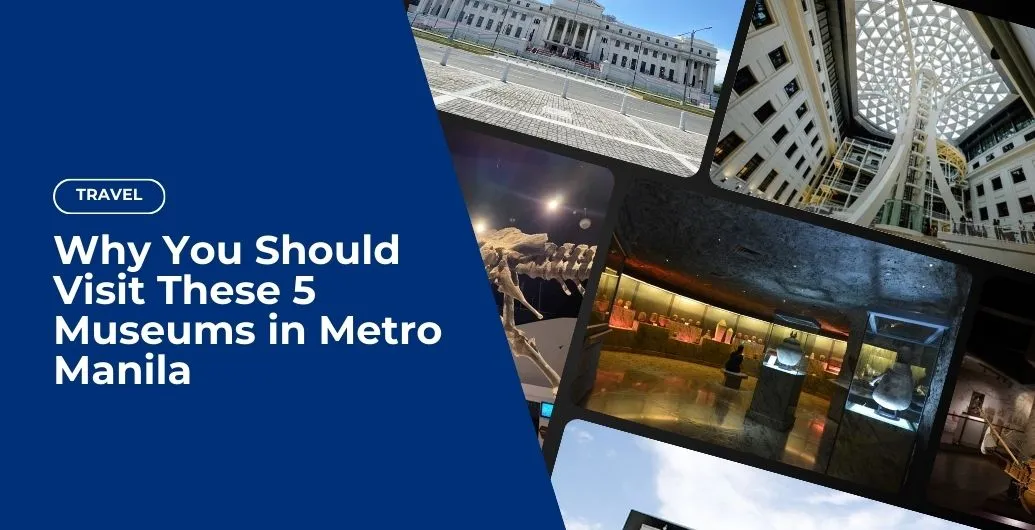Metro Manila is more than just the bustling capital of the Philippines. It’s also an epicenter for culture, history, and the arts. Whether you’re a fan of contemporary masterpieces or fascinated by centuries-old artifacts, the municipality offers several museums to satisfy your curiosity. So, if you’re looking to explore a deeper understanding of the Filipino heritage, here are five museums in Metro Manila that you should visit.
Must-Visit Museums Around Metro Manila
As the central hub of all activities in the Philippines, it’s no surprise that Metro Manila is home to some of the best museums in the country. If you’re looking for must-see destinations to visit, we recommend giving these galleries a tour:
National Museum of Fine Arts
The National Museum of Fine Arts is at the top of our list of the best museums in Metro Manila. If you’re an art enthusiast, it’s perhaps the greatest museum in the Philippines. One great reason to visit the museum is that each painting tells a story of significant events in Philippine history, so you can look back and appreciate what our country has been through.
Established in 1920, the building housed the Congress of the Philippines until 1998. The museum currently features masterpieces from renowned Filipino painters, sculptors, and printmakers, such as Simon Flores, Fernando Amorsolo, Guillermo Tolentino, and more.



The museum has 29 galleries on four floors, so it’s best to set aside plenty of time to explore and enjoy its vast collections. Besides, you’ll probably be fascinated by the artworks and history, making you want to stay a while.
Upon entering, you’ll be greeted with the iconic “Spoliarium” painting by the famed 19th-century Filipino artist Juan Luna. Right across from it is Felix Resureccion Hidalgo’s “The Assassination of Governor Bustamante.”
You’ll also see the old Senate Session Hall, where you’ll find Carlos “Botong” Francisco’s “Filipino Struggles Through History.” The series of paintings impressively takes up the entire hall, so make sure to take some time to admire its details.
Almost every turn of the museum is a different gallery, so enjoy exploring each room. Don’t worry; each gallery has information on the specific collection so that you can learn about the exhibit’s history and significance.
- Location: Padre Burgos Avenue, Ermita, Manila
- Opening Hours: Tuesday to Sunday, 9 AM to 6 PM
- Entrance Fee: Free
- Visitor Guidelines: You’re not allowed to bring large bags, umbrellas, tripods, disposable water bottles, pens, and other art materials inside the museum. If you bring any, you can leave them at the baggage counter.
Also Read: Renowned, Self-taught Artist in Mindanao—Nonoy Estarte
National Museum of Natural History
The National Museum of Natural History exhibits native plants and animals in the Philippines. So, if you want to learn about the country’s biodiversity and geology, consider visiting the gallery. Upon entering, you’ll get a peek of what’s inside the gallery since you’ll be greeted with a 13.25-meter skeleton of a Marinduque Sperm Whale suspended from the ceiling.
When you enter the courtyard, you’ll spot the famous “Tree of Life.” It’s a breathtaking centerpiece that acts as the museum’s elevator, representing the Philippines’ rich natural resources. At the bottom, you’ll find replicas of dinosaur bones housed in glass cases.
You’ll also find the skeleton display of Lolong, the Philippines’ largest crocodile held in captivity. His 6.17-meter (20.3-foot) taxidermied body is also in another room in the museum.
The six-floor museum displays dioramas of the country’s mangroves, forests, and wetlands. You’ll also find specimens native to the Philippines, such as the tarsier, tamaraw, and Philippine Eagle.
- Location: Teodoro F. Valencia (Agrifina) Circle, Rizal Park, Ermita Manila
- Opening Hours: Tuesday to Sunday, 9 AM to 6 PM
- Entrance Fee: Free
- Visitor Guidelines: You’re not allowed to bring large bags, umbrellas, tripods, disposable water bottles, pens, and other art materials inside the museum. If you bring any, you can leave them at the baggage counter.
National Museum of Anthropology
If you’re a history buff, the National Museum of Anthropology is one of the best museums around Metro Manila to learn about the culture and livelihood of indigenous Filipinos. It exhibits materials and agricultural tools, such as baskets, weapons, and textiles, used and crafted by early Filipinos. In the courtyard, you can also find a replica of a traditional Ifugao dwelling.
One of the museum’s showcases is artifacts from the San Diego shipwreck, which dates back about 500 years. The vessel was originally built for trading before being converted into a warship. It sank in 1600, a short distance from Fortune Island, Nasugbu, Philippines.
If you have a penchant for the macabre, you’ll enjoy the “Kaban ng Lahi” gallery. It exhibits past burial traditions dating back 2,500 to 1,00 years ago. You’ll see mortuary potteries, burial jars, and wooden coffins from different parts of the Philippines.
- Location: Padre Burgos Drive, Teodoro F. Valencia (Agrifina) Circle, Rizal Park, Ermita Manila
- Opening Hours: Tuesday to Sunday, 9 AM to 6 PM
- Entrance Fee: Free
- Visitor Guidelines: You’re not allowed to bring large bags, umbrellas, tripods, disposable water bottles, pens, and other art materials inside the museum. If you bring any, you can leave them at the baggage counter.
The Mind Museum Philippines
If you’re in the mood for interactive displays, prepare for a treat at The Mind Museum Philippines. They have around 250 exhibits that explore space, nature, and technology.
The museum is separated into five galleries. The Atom Gallery contains the most interactive exhibits, where you can explore elemental forces like gravity and electromagnetism. The Life Gallery showcases habitats and living creatures that inhabit the planet. Next is the Earth Gallery, where you can peek at the country’s first permanent T. Rex exhibit.



Before you can get to the Universe Gallery, you’ll pass through stairs installed with piano tiles. So, prepare to make some noise with every step you take. At the Universe Gallery, you’ll explore the vast world of outer space.
It also has a planetarium where you can watch video tours at scheduled time slots. We think it’s best to save the video tour for the end of your visit. Each room has comfy seats, so you can sit back and relax as you watch the educational videos.
Last but not least is the Technology Gallery, the largest exhibit in the museum. It’s divided into five themes, so you can learn how technology shapes human values.
- Location: JY Campos Park, 3rd Avenue, Bonifacio Global City, Taguig City
- Opening Hours: Tuesday to Saturday, 9 AM to 6 PM
- Entrance Fees: ₱625 for a three-hour pass for adults, ₱475 for a three-hour pass for children and private school students, ₱190 for public school students and teachers, and ₱750 for an all-day pass.
Chinatown Museum
If you want a break from the crowd, head to Chinatown Museum. It’s one of the less populated museums in Metro Manila since it’s tucked inside the Lucky Chinatown Mall in Binondo. The gallery gives you a glimpse into the history and cultural heritage of the oldest Chinatown in the world. If you love collecting stamps, you can buy a booklet at the entrance to gather various souvenir stamps throughout the exhibits.
The museum has 18 galleries exhibiting Binondo’s cultural, social, and economic progress. It displays porcelain wares, old trade documents, and old currencies depicting the trading history between the Chinese and Filipinos.
You can also find an interactive map of Old Manila. It lights up whenever you press a button, so you can pinpoint where significant events happened.
One gallery is also dedicated to the Alcaiceria, which translates to the “Silk Market.” Popularly known as The Real Alcaiceria de San Francisco, it was constructed in 1752 following Ferdinand VI’s Royal Decree. It’s an octagonal structure dedicated to shops selling textiles and wares, while the second floor served as housing for transient Chinese merchants.
- Location: 4th Floor North Wing, Lucky Chinatown, Reina Regente St., Binondo, Manila
- Opening Hours: Tuesday to Sunday, 10 AM to 6 PM
- Entrance Fee: ₱150 (regular), ₱120 (senior citizen and PWD), ₱100 (student)
Also Read: Top 10 Must-See Places to Visit in Mindanao
Important Reminders When Visiting Museums Around Metro Manila
Each museum will have rules to help protect its exhibits, so here are a few you can keep in mind to make your visit enjoyable:
- Many museums allow visitors to take photos of the exhibits but may restrict flash photography. Always ask for permission or look for signs regarding photography policies.
- Refrain from touching the exhibits and artwork unless explicitly permitted. This helps preserve the displays for future visitors.
- Museums are places of learning and reflection. Keep your voice down so you won’t disturb other patrons.
- Most museums around Metro Manila have strict rules against bringing food and drinks inside to avoid spills and stains on their artifacts.
- If you’re bringing children, supervise them through the exhibits to prevent accidents and damage.
Museums in Metro Manila: FAQs
If you plan on visiting the museums in the Philippines, here are answers to frequently asked questions:
What is the largest museum in the Philippines?
The National Museum of the Philippines is the largest in the country. Within the complex are the National Museum of Fine Arts, the National Museum of Natural History, and the National Museum of Anthropology.
What is the oldest museum in the Philippines?
The University of Santo Tomas Museum is the oldest existing gallery in the Philippines. It was established in 1869 to comply with the 1865 Reglamento de Segunda Enseñanza, which required all first-class colleges to have a Museo de Historia Natural.
Why are Philippine museums important?
Museums in the Philippines help preserve the country’s culture by safeguarding artifacts and educating the public on its history.
Sources: (1), (2), (3), (4), (5)
Keep Reading: The Ultimate Cagayan de Oro Travel Guide

Leave a Reply